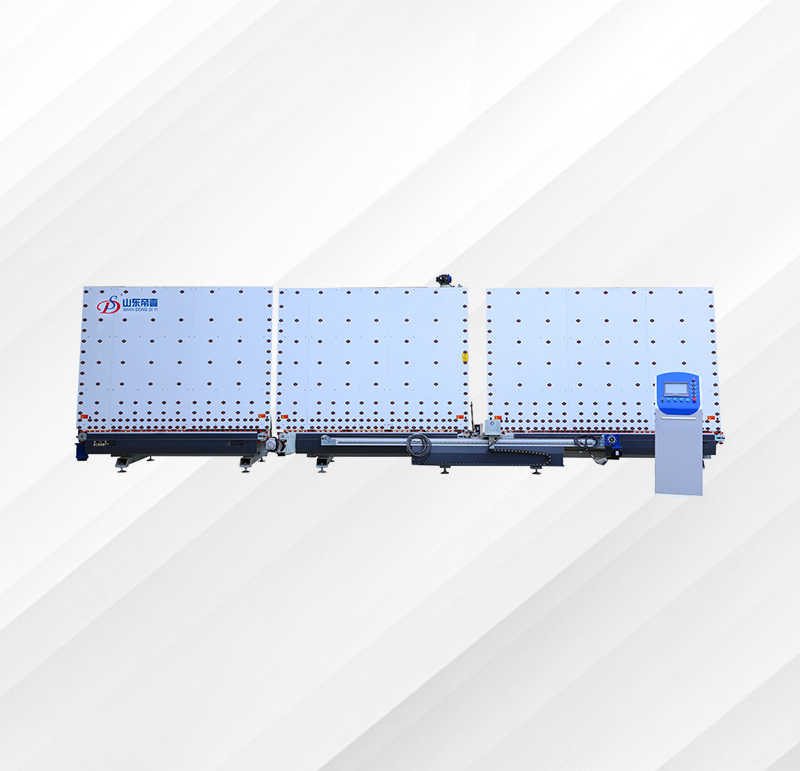
丁基膠涂布機使用常見問題
時間:2024-03-16 來源:http://www.aabrs.cn/ 發布人:昌盛機械
現象一:涂敷在鋁隔條上的丁基膠條有毛邊,不整齊。
Phenomenon 1: The butyl rubber strip applied on the aluminum partition strip has rough edges and is not neat.
原因:兩膠嘴出口處可能有雜質或膠嘴口不光滑。
Reason: There may be impurities at the outlet of the two glue nozzles or the glue nozzle mouth may not be smooth.
解決辦法或建議:檢查兩膠嘴出口處是否有雜質或膠嘴是否光滑。
Solution or suggestion: Check if there are any impurities at the outlet of the two rubber nozzles or if the rubber nozzles are smooth.

現象二:合片后的丁基膠條與第二道密封膠出現一條間隙(白線)。
Phenomenon 2: There is a gap (white line) between the butyl adhesive strip and the second layer of sealant after lamination.
原因:第二道密封膠沒有用正確的涂敷方式。
Reason: The second sealant was not applied correctly.
解決辦法:涂敷第二道密封膠時,應適當用力并按一個方向涂敷,以防空氣裹入膠中,降低中空玻璃的密封性能。
Solution: When applying the second layer of sealant, appropriate force should be applied in one direction to prevent air from getting trapped in the adhesive and reducing the sealing performance of the insulating glass.
現象三:加熱后擠出不順利,容易斷膠(斷線)。
Phenomenon three: The extrusion is not smooth after heating, and it is easy to break the adhesive (wire).
原因:丁基密封膠使用的關鍵在于擠出,溫度的控制在擠出加工過程中至關重要,溫度控制是否適宜,直接影響丁基密封膠在整個加工過程中的流變狀態,影響著產品的內在質量的美觀,應該對溫度特別注意。溫度過高會引起密封膠熔融過大,無強度甚至根本無法成型(流淌現象);溫度過低,膠的流動差,機器擠不出膠,影響施工進度,這是擠出不順利的主要原因。另一種原因可能是丁基密封膠在制造中夾雜有氣泡,在擠出過程中造成斷膠。
Reason: The key to using butyl sealant lies in extrusion, and temperature control is crucial during the extrusion process. The suitability of temperature control directly affects the rheological state of butyl sealant throughout the entire processing, affecting the internal quality and aesthetics of the product. Therefore, special attention should be paid to temperature. Excessive temperature can cause the sealant to melt too much, lack strength, or even fail to form (flowing phenomenon); The low temperature, poor flow of the glue, and the inability of the machine to extrude the glue affect the construction progress, which is the main reason for the unsmooth extrusion. Another possible reason may be that butyl sealant contains bubbles during manufacturing, causing adhesive breakage during the extrusion process.
解決辦法:溫度的選定一般以廠家提供的擠出溫度為宜,擠出機溫度,一般設定機筒在110-140℃之間,機頭在112-142℃之間。為了使主機產生一定的壓力,使熔融均勻擠出,故要求機頭溫度高于機筒溫度,溫度有一定的滯后性,調整中應注意,加溫和降溫應逐漸進行,涂敷膠開始前,應適當排氣,以減少內部氣泡和空隙,防止擠出時產生氣泡造成斷膠。
Solution: The selection of temperature is generally based on the extrusion temperature provided by the manufacturer. The extruder temperature is generally set between 110-140 ℃ for the barrel and 112-142 ℃ for the head. In order to generate a certain amount of pressure on the host and ensure uniform extrusion, it is required that the temperature of the machine head is higher than the temperature of the machine barrel, with a certain degree of temperature hysteresis. During adjustment, attention should be paid to gradually heating and cooling. Before applying adhesive, appropriate exhaust should be carried out to reduce internal bubbles and gaps, and prevent bubbles from causing adhesive breakage during extrusion.
- 封膠線麻煩?全自動封膠線了解一下 2025/04/01
- 中空玻璃加工設備:建筑節能革命的核心引擎 2025/03/31
- 中空玻璃生產線的概述 2025/03/28
- 全自動鋁條折彎機安全操作流程 2025/03/24
- 全自動封膠線的好處有哪些? 2025/03/24
- 雙組份打膠機的工作原理和優勢是什么? 2025/03/21
- 全自動鋁條折彎機:鋁加工行業的高效利器 2025/03/20
- 全自動封膠線是工業制造的高效粘結助力! 2025/03/18
- 中空玻璃加工設備怎么開啟高效節能玻璃制造新時代? 2025/03/18
- 你知道中空玻璃生產線是建筑玻璃制造的核心力量嗎? 2025/03/17

 當前位置:
當前位置:



 產品分類Product categories
產品分類Product categories
 聯系我們Contact us
聯系我們Contact us
